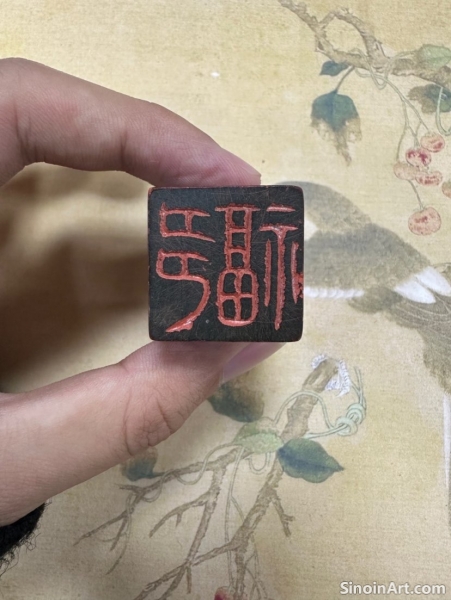The Allure of Leisure Seals: An Introduction to Xian Zhang
|
Chinese leisure seals, or xiánzhāng, represent a captivating facet of the Chinese seal carving tradition. Unlike name seals and studio seals which serve specific identification or locational functions, leisure seals are created for personal enjoyment and artistic expression. These seals often feature short phrases, literary allusions, or personal mottos that reflect the owner's interests, beliefs, or state of mind. Xian Zhang embody a unique sense of freedom and artistic innovation.  Historically, the development of leisure seals is linked to the growing importance of personal expression in Chinese culture. Scholars, artists, and intellectuals began to use these seals to decorate their personal works, express their aesthetic tastes, or reflect on philosophical ideas. They served as a way to connect to personal and artistic ideals.  The design of a leisure seal is characterized by its freedom and creativity. The choice of inscription is often subjective and varies widely, ranging from poetic phrases, philosophical quotes, to humorous sayings. The seal's form is also less constrained than that of name seals, often featuring unconventional shapes and designs. There is a wide degree of freedom in both inscription and design.  The use of leisure seals is not limited to any specific context. They may be stamped on paintings, calligraphy pieces, letters, or even personal belongings, adding a layer of artistic and personal significance. Their purpose is to reflect the owner's personality and to show a sense of their personal tastes. The creation of a leisure seal is an act of artistic self-expression. The choice of characters, script style, material, and design all reflect the owner’s individual aesthetic sensibility and personal philosophy. They often become cherished possessions, used as a means of both personal expression and artistic enrichment. |
Tag : Chinese Leisure Seals, Xian Zhang, Free Seals, Hobby Seals, Seal Carving Art
Related information
- Collector's Seals vs. Other Seal Types: Purpose and Usage
- The Significance of Studio Seals: An Introduction to Zhaiguan Yinzhang
- Inscriptions of Studio Seals: Unveiling the Character of the Space
- Famous Seal Carvers in Chinese History: The Masters of Zhuanke
- The Preservation of Seal Carving: Safeguarding an Ancient Art
This article compares and contrasts collector's seals with other types of Chinese seals, such as name seals, studio seals, and leisure seals, highlighting their unique functions and distinctive features.
This article introduces the concept of Chinese studio seals, exploring their historical context, cultural significance, and how they differ from personal name seals.
This article delves into the various types of inscriptions found on studio seals, exploring their meanings and how they reveal the nature and purpose of the studio or hall.
Discover the lives and works of famous Chinese seal carvers throughout history. Learn about the contributions of masters like Zhao Mengfu, Wen Peng, and Qi Baishi to the art of zhuanke.
This article explores the importance of preserving Chinese seal carving, focusing on the need for documentation, education, innovation, and the involvement of cultural institutions.